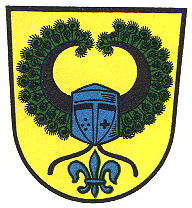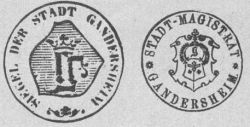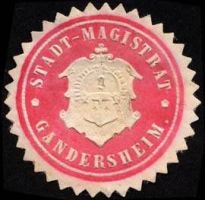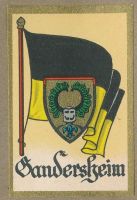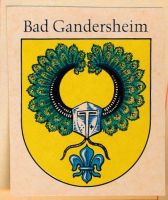Bad Gandersheim: Difference between revisions
Knorrepoes (talk | contribs) m (Text replacement - "{{media}}" to " {{de1}} {{media1}}") |
Knorrepoes (talk | contribs) m (Text replacement - "{{de}}" to "") |
||
| Line 1: | Line 1: | ||
'''BAD GANDERSHEIM''' | '''BAD GANDERSHEIM''' | ||
Revision as of 14:55, 26 December 2022
BAD GANDERSHEIM
State : Niedersachsen
District (Kreis) : Northeim (until 1973 Gandersheim)
Additions : Ackenhausen, Altgandersheim, Clus-Brunshausen, Dankelsheim, Dannhausen, Gehrenrode, Gremsheim, Hachenhausen, Harriehausen, Heckenbeck, Helmscherode, Seboldshausen, Wolperode, Wrescherode
| German | Im goldenen Schild ein silberner Topfhelm, dessen Helmzier, zwei gebogene schwarze Büffelhörner, mit einer Doppelreihe grüner Pfauenfedern besteckt ist; vom Helm hängen zwei rote Bänder herab, zwischen denen eine blaue Lilie schwebt. |
| English | Gandersheim No blazon/translation known. Please click here to send your (heraldic !) blazon or translation |
Origin/meaning
The arms are based on the oldest seal of the city, which is known from 1335, but which may be a few decades older. The second seal, which is slightly younger, is identical, except for the lily. The lily is most likely the symbol of the local monastery. The helmet and crest are those of the Dukes of Braunschweig-Lüneburg, who ruled the city in the early 14th century.
The arms were not changed until the 18th century, when the seals showed a crown capital letter G. This remained until 1901, when the present, historical, arms were granted.
The arms by Hupp in the Kaffee Hag albums +/- 1925
The arms in an album from 1932
The arms in an album from 1968
Literature: Stadler, 1964-1971, 8 volumes.
